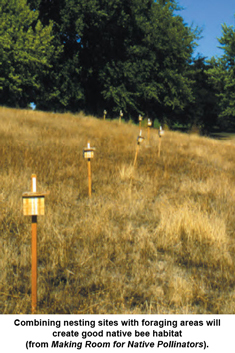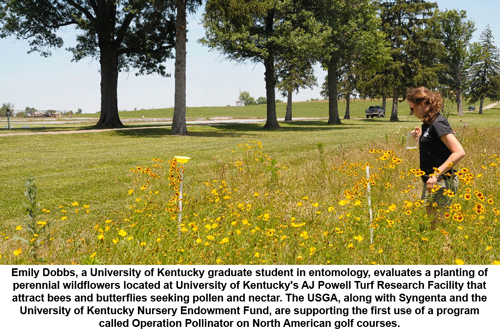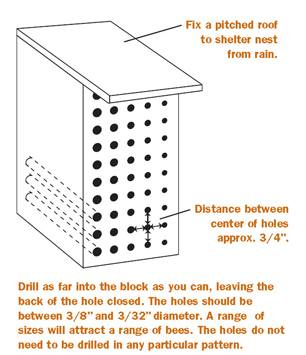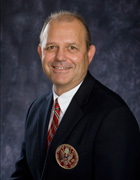
The following are opinion pieces developed by partners of NAPPC (North American Pollinator Protection Campaign). They are opinions expressed by the author. If you have any comments, please direct them here.
Conservation of Native Pollinators on Golf Courses
Golf courses contain large areas that remain out-of-play and often unmanaged, providing habitat for plants and insects. These areas can be valuable for restoring populations of wildlife that help pollinate the surrounding plant life. The United States Golf Association is providing education to course managers and golfers about native pollinators, including native bees, butterflies, and moths that have been on the decline in the last twenty years.

With help from the U.S. Department of Agriculture Bee Biology and Systematics Laboratory, the USGA funded a three-year project in 1997 with The Xerces Society to study the conservation of native pollinators, especially of bees, on golf courses. The published guidelines, Making Room for Native Pollinators: How to Create Habitat for Pollinator Insects on Golf Courses were prepared because of that project. The guidelines illustrate that simple changes to the environment of golf courses can have great benefits for wildlife. A flower-rich habitat for bees may also become home to hummingbirds, butterflies, beetles, or flower flies, and diverse habitats will attract other animals and birds. Some of the insects attracted, such as solitary-nesting wasp species, prey on cutworms that infest golf courses.
These golf course habitat areas for plants and insects also offer educational possibilities, not just for the golfers but also for local schools and communities who can learn about practical conservation techniques and witness first-hand their benefits. Conservation of native bees and plants is a valuable way in which golf courses can contribute to a healthier environment, and is a simple task to integrate into the management of a course.
Recently, the USGA, along with Syngenta and the University of Kentucky Nursery Endowment Fund, are supporting the first use of a program called Operation Pollinator on North American golf courses. "Bees are really critical for food supply," said Daniel Potter, professor of entomology at the University of Kentucky (UK). Hence, there is an urgent need to cultivate spaces that are friendly to bees and butterflies. Emily Dobbs, a UK graduate student in entomology, began the project in 2011 to produce mixes of wildflowers that would attract bees and butterflies. Then, she planted them on six Lexington golf courses.

"You can't just go out in a field and start throwing seeds around," Potter said. The plots are 20 feet by 200 feet for each of the golf courses. Of the three seed mixes developed, Dobbs said one is for butterflies, two are for bees, and one is a fallow plot that serves as a control. Consisting of perennial plants, the seed mix is designed to provide visual interest for all seasons. "There's an opportunity to create a sanctuary here," Dobbs explained. She is using different techniques to measure success, including the number of blooms, "bee bowl" trapping in bright plastic bowls with soapy water, and butterfly nets.
Initiated by the Syngenta Company, Operation Pollinator projects began in Great Britain. The idea is to provide scattered plantings for bees and butterflies to gather pollen and nectar. For North America, "The possibilities for other pollinator gardens are nearly endless — on horse farms, school grounds, private homes, and even neighborhood parkland," Dobbs said. For now, Potter suggested, "The golf course can become an urban sanctuary."

Bee nesting blocks can be made from blocks of water-resistant lumber at least 4 inches by 6 inches, or even 8 inches. Treated lumber and cedar should be avoided as the chemicals will affect the nests (from Making Room for Native Pollinators).
